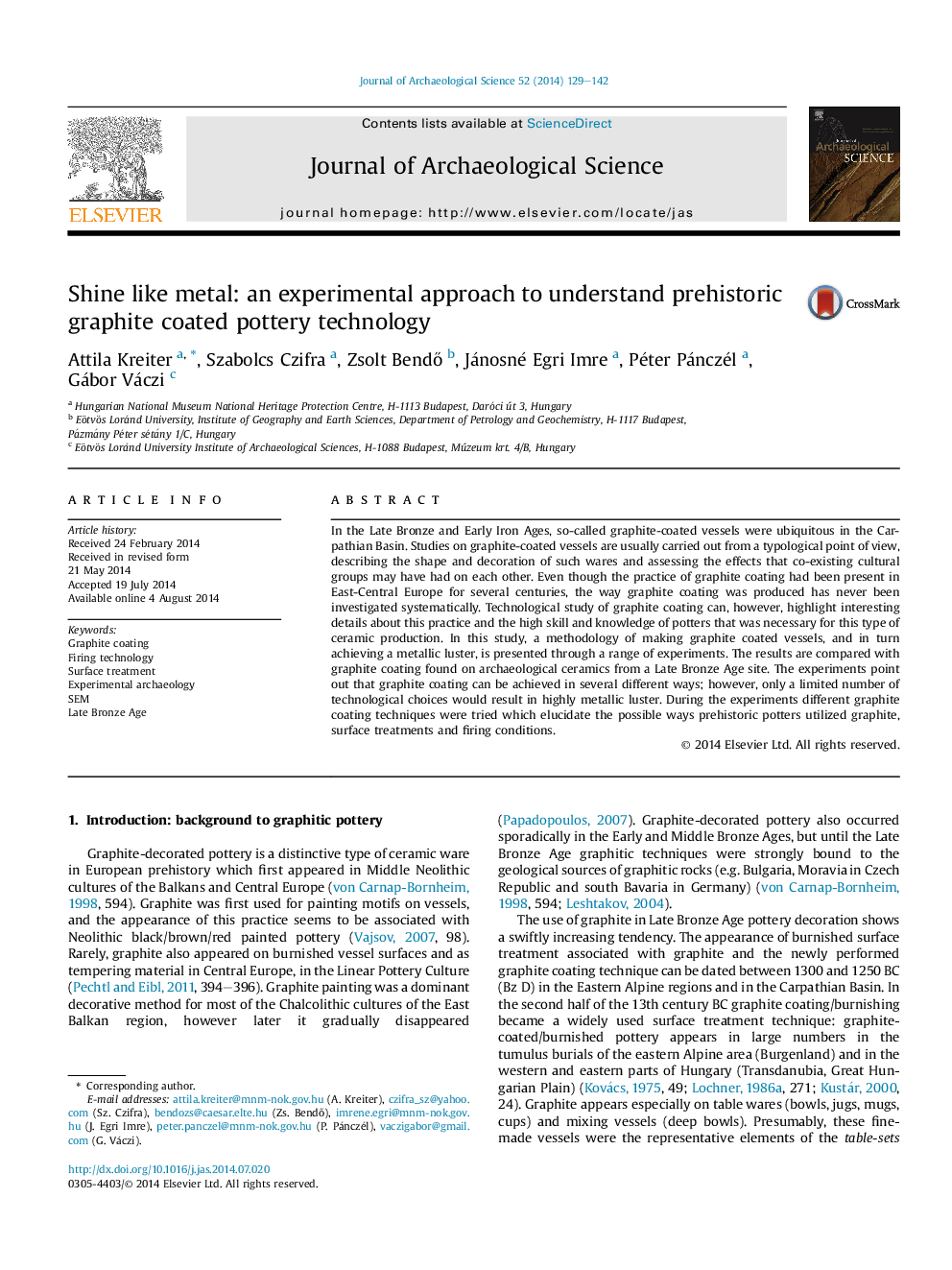| Article ID | Journal | Published Year | Pages | File Type |
|---|---|---|---|---|
| 7442631 | Journal of Archaeological Science | 2014 | 14 Pages |
Abstract
In the Late Bronze and Early Iron Ages, so-called graphite-coated vessels were ubiquitous in the Carpathian Basin. Studies on graphite-coated vessels are usually carried out from a typological point of view, describing the shape and decoration of such wares and assessing the effects that co-existing cultural groups may have had on each other. Even though the practice of graphite coating had been present in East-Central Europe for several centuries, the way graphite coating was produced has never been investigated systematically. Technological study of graphite coating can, however, highlight interesting details about this practice and the high skill and knowledge of potters that was necessary for this type of ceramic production. In this study, a methodology of making graphite coated vessels, and in turn achieving a metallic luster, is presented through a range of experiments. The results are compared with graphite coating found on archaeological ceramics from a Late Bronze Age site. The experiments point out that graphite coating can be achieved in several different ways; however, only a limited number of technological choices would result in highly metallic luster. During the experiments different graphite coating techniques were tried which elucidate the possible ways prehistoric potters utilized graphite, surface treatments and firing conditions.
Keywords
Related Topics
Physical Sciences and Engineering
Materials Science
Materials Science (General)
Authors
Attila Kreiter, Szabolcs Czifra, Zsolt BendÅ, Jánosné Egri Imre, Péter Pánczél, Gábor Váczi,
